ISSN
2307–3489 (Print), ІSSN
2307–6666
(Online)
Наука та прогрес
транспорту. Вісник
Дніпропетровського
національного університету залізничного
транспорту, 2018, № 5 (77)
РУХОМИЙ
СКЛАД ЗАЛІЗНИЦЬ І ТЯГА ПОЇЗДІВ
UDC
629.42.015
V. А.
ТАТАRІNОVА1*,
J. KАLІVОDА2*,
L. О. NЕDUZha3*
1*Dep.
«Theoretical and
Structural Mechanics»,
Dnipropertovsk National
University named
after Academician
V. Lazaryan,
Lazaryan St.,
Dnipro, Ukraine,
49010, tel.
+38 (097) 728 36 99,
e-mail
Valentina100vol@gmail.com, ORCID
0000-0001-6484-3777
2*Dep.
«Automobiles, Internal Combustion Engines and Railway
Vehicles», Czech Technical University,
Technicka
St., 4, Prague 6, Czech Republic, 16607, tel.
+(420) 224 352 493,
e-mail
jan.kalivoda@fs.cvut.cz, ORCID 0000-0002-0278-2515
3*Dep.
«Theoretical and
Structural Mechanics»,
Dnipropertovsk National
University named after Academician V. Lazaryan,
Lazaryan St., Dnipro,
Ukraine, 49010, tel. +38 (067) 810 51 65,
e-mail nlorhen@i.ua,
ORCID 0000-0002-7038-3006
RESEARCH OF
LOCOMOTIVE MECHANICS BEHAVIOR
Purpose.
The main purpose of the study is to compare and confirm the
results of theoretical studies of locomotive motion along the
straight and curved track sections in the set range of operating
speeds, which is essential for determining their dynamic qualities.
The conducted research complex is one of the prerequisites for
improving the reliability of the rolling stock mechanics, in
particular the bogie parameters. Methodology.
The research was carried out by numerical integration of the
dynamic loading of a railway vehicle using one of the modern software
complexes. In this study we used the mathematical model of locomotive
spatial oscillations obtained using Lagrangian equations of the
second kind. Findings.
Authors carried out theoretical research and performed the
analysis of the vehicle behavior during the motion along the track
section, which in the vertical plane has no geometric defects, and
taking into account the inequalities on the example of the main
locomotive. The researches were carried out both analytically and
with the help of the modern software complex. Comparison
of the graphs shows that the results obtained by different methods
coincide with sufficient accuracy.
Originality.
Based on the
results of many
years of work,
the authors
present the
General Classification
of Locomotive
Mechanics, which
may be useful
to researchers,
who are involved
in the assessment
of the dynamic
qualities of new
and upgraded
types of rolling
stock. Practical value. A new
licensed modern software complex has been applied, which makes it
possible to use it in the design, modeling of units of rolling stock
and their elements; during theoretical and experimental studies,
comparison of their results. The results of theoretical research can
be taken into account for the preliminary research during creating
the reliable constructions of a new vehicle, further improvement of
the mechanics, modernization of the existing units of rolling stock
during field tests.
Keywords: vehicle; rolling stock; locomotive;
vehicle mechanics; bogie; software complex
Introduction
Designs of
the new generation of traction rolling stock allows to provide its
high performance: to reduce power consumption for traction; to
reduce the impact on the track at a given load from the wheel set
axle on the rails; to improve the working conditions of locomotive
crews and passenger comfort; to reduce the emission of harmful
substances into the atmosphere, etc. [10,
18, 19, 21].
As is known
from the history of rail transport, the mechanics of the first
locomotives consisted of a body, wheel sets with bearing units,
traction drive, draw gear and brakes (Fig. 1, a). Over time, the
design of the mechanics changed several times – its features
depended on changing requirements to the traction rolling stock,
increased design speed, the locomotive purpose, the type of motion,
the need to take into account the growing demand of consumers and
many other factors [3, 5, 7,
9, 10, 21–24]. Due to achievements of
modern machine building and the development of scientific and
technological progress the main components of the mechanics of the
first locomotives received significant
improvement (Fig. 1, b, c)
and railway machinery manufacturers are not ready to rest on the
results obtained [8, 10].
Modern locomotives have, as a rule, rotary bogies with one or two
stages of spring suspension (elastic and dissipative elements),
body-bogie mounting point, elements of the transmission of
longitudinal forces between the bogie and the body, quasi-elastic
cross-links between them, turn-over fixtures and units for uniform
distribution of vertical loads between wheel sets (Fig. 1, c).
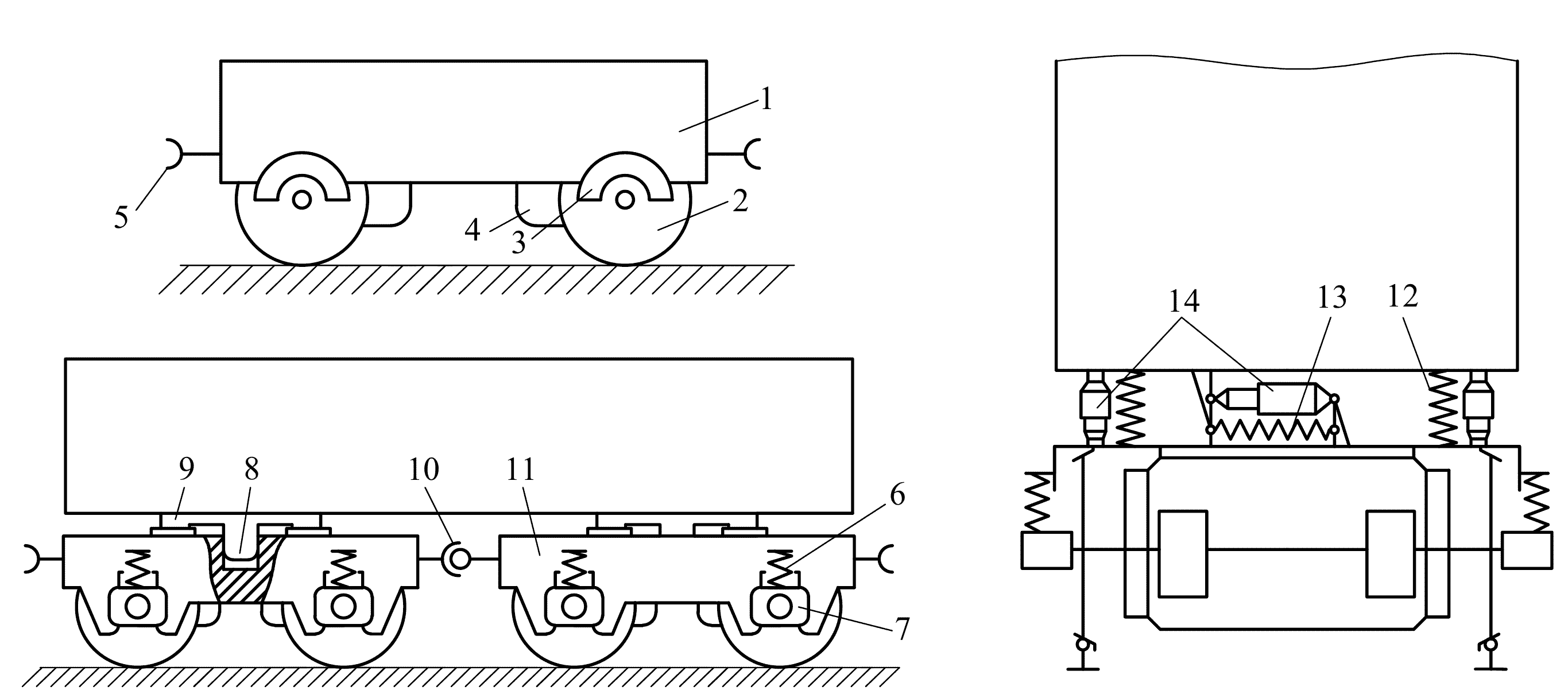
c
b
a
Fig. 1. Evolution of the mechanics in the locomotive:
а
– mechanics
of the first locomotives:
1
– body; 2
– wheel set; 3
– bearing unit; 4
– traction drive; 5
– draw gear and brakes;
b
– improved
design of the mechanics:
6
– elastic elements; 7
– axle box; 8
– pivot; 9
– body support; 10
– bogie coupling; 11
– bogie frame;
c
– construction
of the modern locomotives` mechanics:
12
– secondary suspension; 13
– spring of lateral suspension; 14
– special devices (dampers)
Purpose
The main purpose of the study
is to compare and confirm the results of theoretical studies of
locomotive motion along the straight and curved track sections in
the set range of operating speeds, which is essential for
determining their dynamic qualities. The conducted research complex
is one of the prerequisites for improving the dynamic qualities of
the rolling stock mechanics, in particular the bogie parameters.
Methodology
The research was carried out by
numerical integration of the dynamic loading of a railway vehicle
using one of the modern software complexes. We used in this study
the mathematical model of locomotive spatial oscillations obtained
using Lagrangian equations of the second kind.
The mechanics of the railway
rolling stock, which is affected by the weight of the equipment,
participates in the transfer of tractive effort from the locomotive
to the train, accepts the dynamic loads that arise when moving along
the straight and curved sections of the track. Therefore, in order
to ensure its normal and trouble-free operation:
– All
components of
the mechanics
corresponded to
the strength
requirements at
the most
unfavourable
combination of
operating loads;
– The
mechanics was
sufficiently
strong, met
the safety
requirements and
railway
operating rules;
– The
mechanics was
a simple
and reliable
construction,
especially its
bogie.
Therefore,
based on the analysis of the traction rolling stock structures [4,
8, 10, 12, 13, 15,
18, 19, 21],
the ideas and achievements of locomotive construction [1,
2, 5, 7, 8–10,
13, 17–19, 21],
the results of numerous studies [3, 5,
7, 9,
21––24], the
authors of the paper, in terms of systematic originality, proposed a
variant of the General Classification of Locomotive Mechanics (Fig.
2).
One
of the
necessary
conditions for
improving the
traction rolling
stock of
railways is
to determine
the parameters
of its
bogie [2, 4,
8–10, 18, 19, 21]. Therefore
the important task is to determine the dynamic qualities of
locomotives, taking into account the selected technical solutions in
the bogie design, for example, the presence and location of
connections between the body and the bogie, the secondary suspension
system, devices for transmission of longitudinal and transverse
forces, etc.
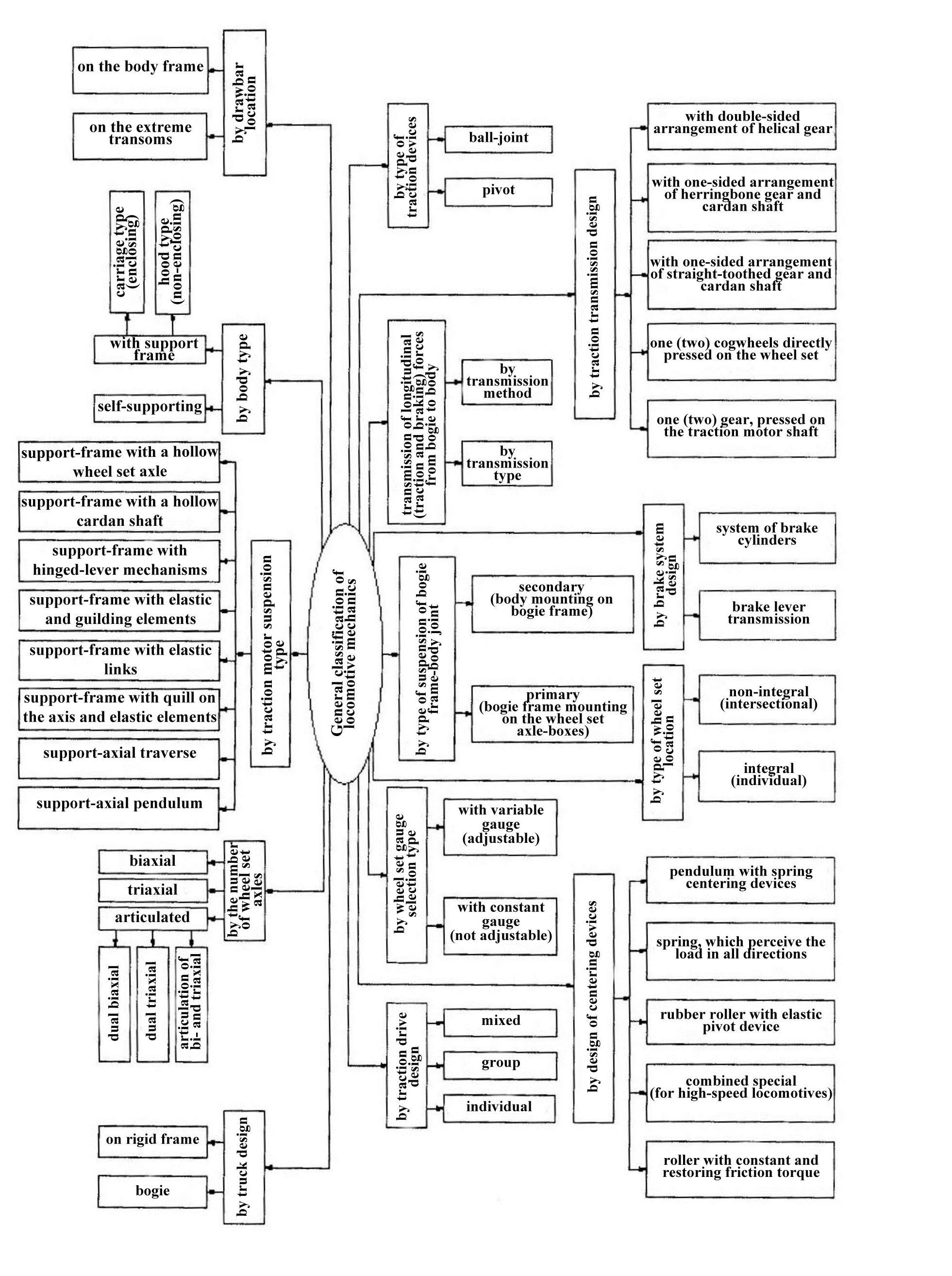
Fig. 2. General Classification of Locomotive Mechanics
This
work presents the research conducted for the main line electric
locomotive of the DS series, which was created in cooperation with
Siemens Concern at the Dnipropetrovsk Electric Locomotive Building
Plant (DELBP)
with the participation of a number
of scientific and production organizations, including the
Dnipropetrovsk National University of Railway Transport named after
Academician V. Lazaryan (DNURT) [10,
18, 19, 21].
Its bogie (Fig. 3) is two-axle, ball-joint, with support-frame
suspension of traction electric motors. For the transmission of
longitudinal forces of traction (braking), a tilt rod is installed
between each bogie and body, which is pivotally connected to the
bogie traction unit and with an equilateral balancer, whose ends are
connected with the rods by means of the pivot-hinged bearings [10,
13, 18, 19].
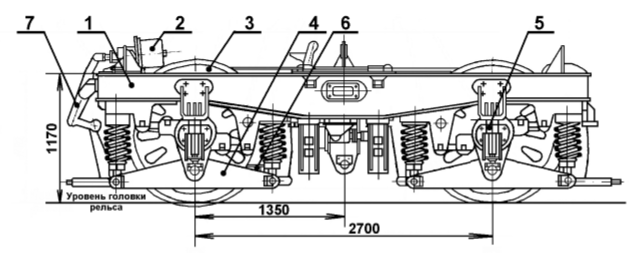
Fig. 3. Bogie drawing:
1
– bogie
frame;
2
– brake
cylinder;
3
– wheel
set;
4
– balancer
of
the
first
stage
of
spring
suspension;
5
– shock absorber; 6
– wheel flange lubricator;
7
– lever braking system
As it is
known, the locomotive mechanics is a complex system with many
bodies that have many degrees of freedom.
This paper
describes the first (simplified) stage of research that considers
the simplest computational dynamic model of the vehicle, i.e. a
single-mass system, whose degree of freedom is equal to one, with
the parameters of the reduced object. We construct the Lagrange
equation of the second kind for the oscillations of this system. Let
the body (possibly a body of a rolling stock unit) of mass m
with
the help of an elastic element and a viscous drag damper is attached
to a wheel set (the mass of which so far neglected), and moves along
the track, which in the vertical plane has no geometric defects
(without regard to track irregularities) (Fig.
4). The
coordinate
axis
y,
along
which
the
body
moves,
is
oriented
down.
The
elastic element has rigidity
c,
the damper viscous drag coefficient we denote as
 .
Figure 4 shows the calculation
model, plane and spatial image of this scheme.
.
Figure 4 shows the calculation
model, plane and spatial image of this scheme.
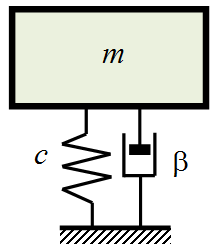
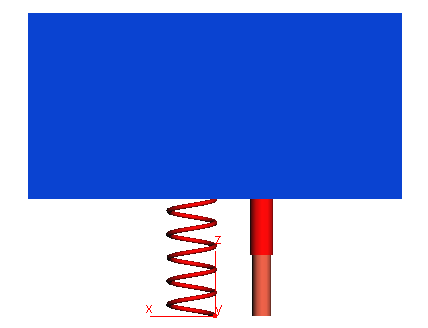
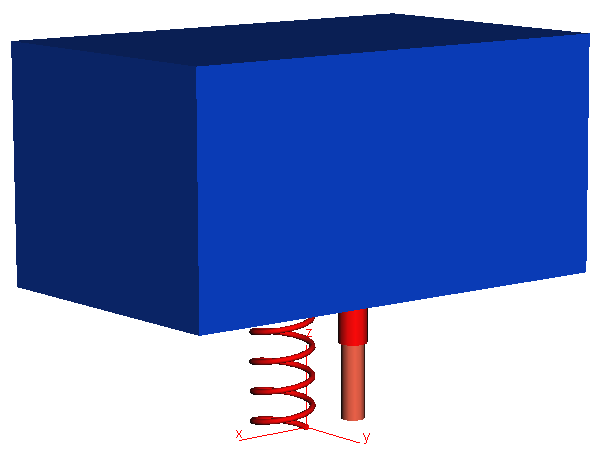
Fig. 4. Object
of research without regard to track irregularities
Since the
system has
one degree
of freedom,
that is
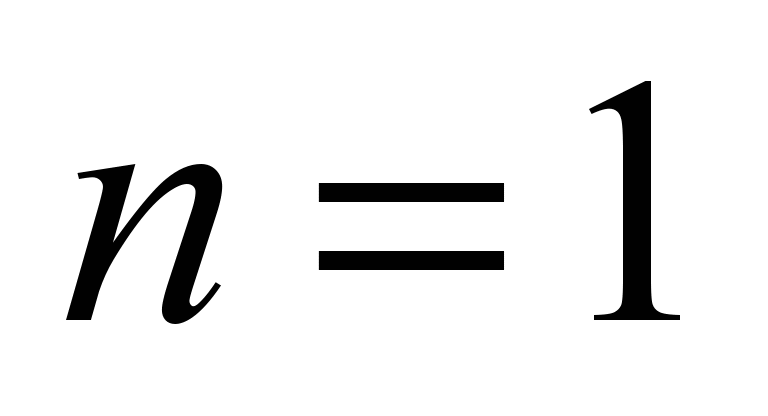 ;
for a
generalized
coordinate, we
choose the
displacement of
the body
along the
vertical axis
;
for a
generalized
coordinate, we
choose the
displacement of
the body
along the
vertical axis
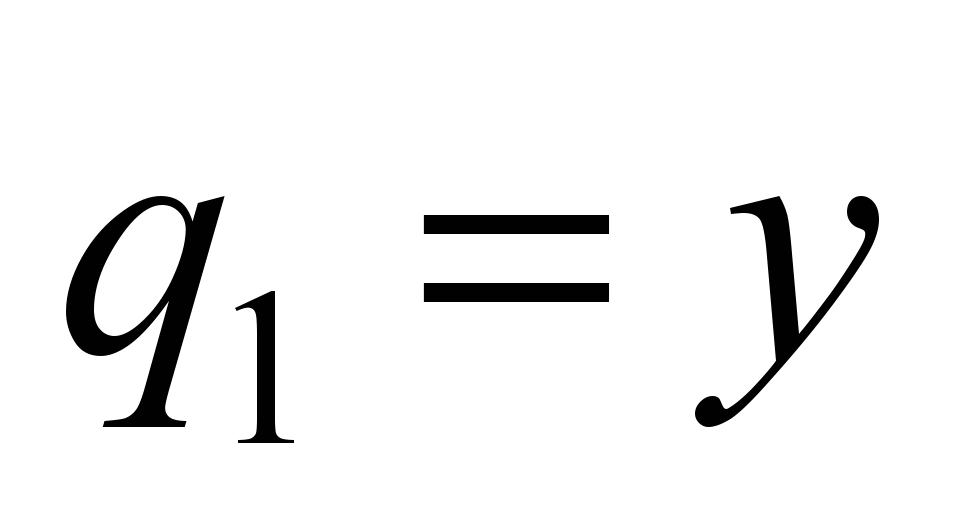 ;
generalized
speed
;
generalized
speed
 .
.
The
kinetic energy
of the
body, the
potential energy
accumulated in
the elastic
element, the
function of
energy
dissipation in
the viscous
drag damper
are determined
by the
known formulas
[2, 6, 11, 14].
The
generalized
force, as
is known
from theoretical
mechanics, can
have two
components:
a
generalized
force that
has the
potential
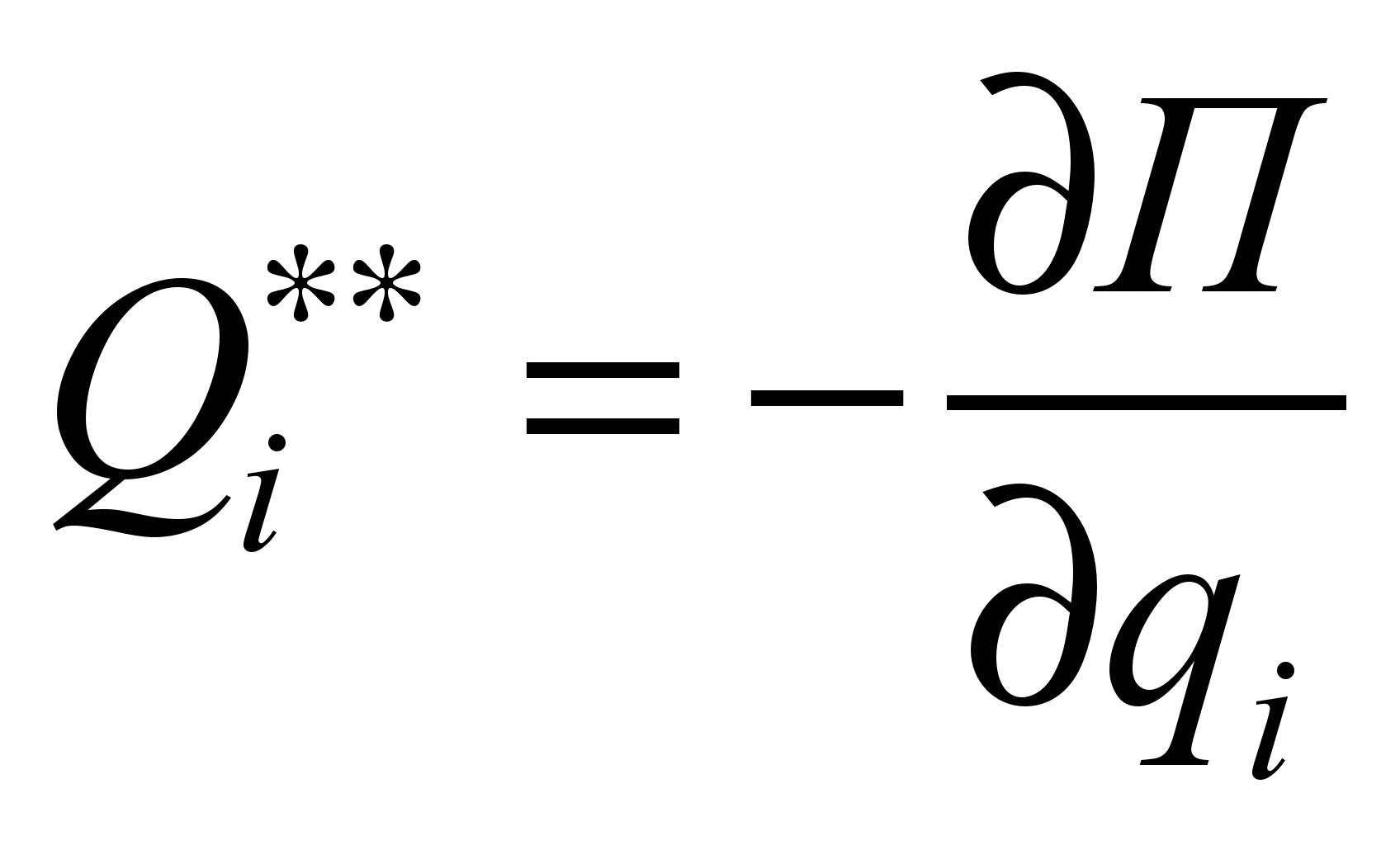 and a
generalized
force that
has no
potential
and a
generalized
force that
has no
potential
 .
That is
.
That is
 .
Since the
load is
not affected
by a
perturbing
external force
that has
no potential,
then the
corresponding
generalized
force
.
Since the
load is
not affected
by a
perturbing
external force
that has
no potential,
then the
corresponding
generalized
force
 .
.
Using the
Lagrange equations
of the second kind
 ,
,
we obtain an
equation of body motion
 ,
in the canonical form it will be as
follows
,
in the canonical form it will be as
follows
 .
.
Let us
denote
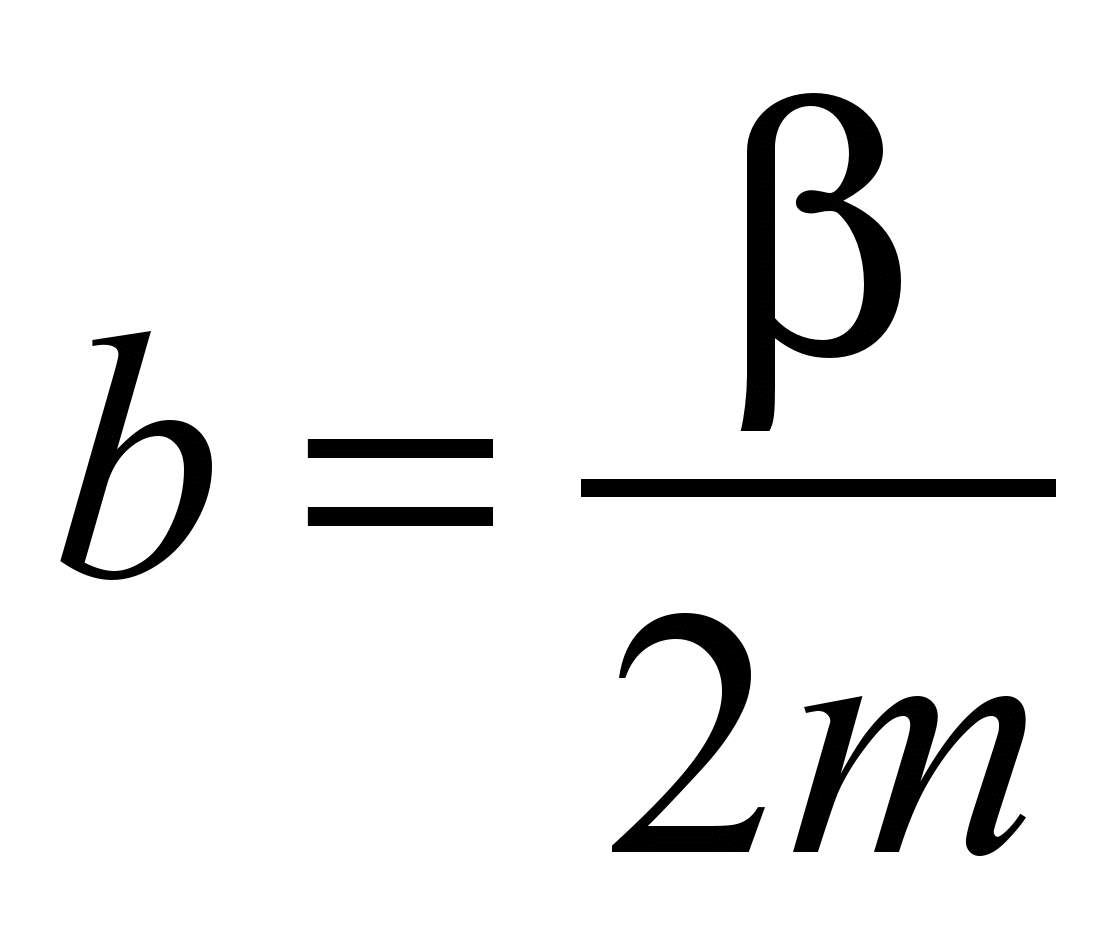 ,
,
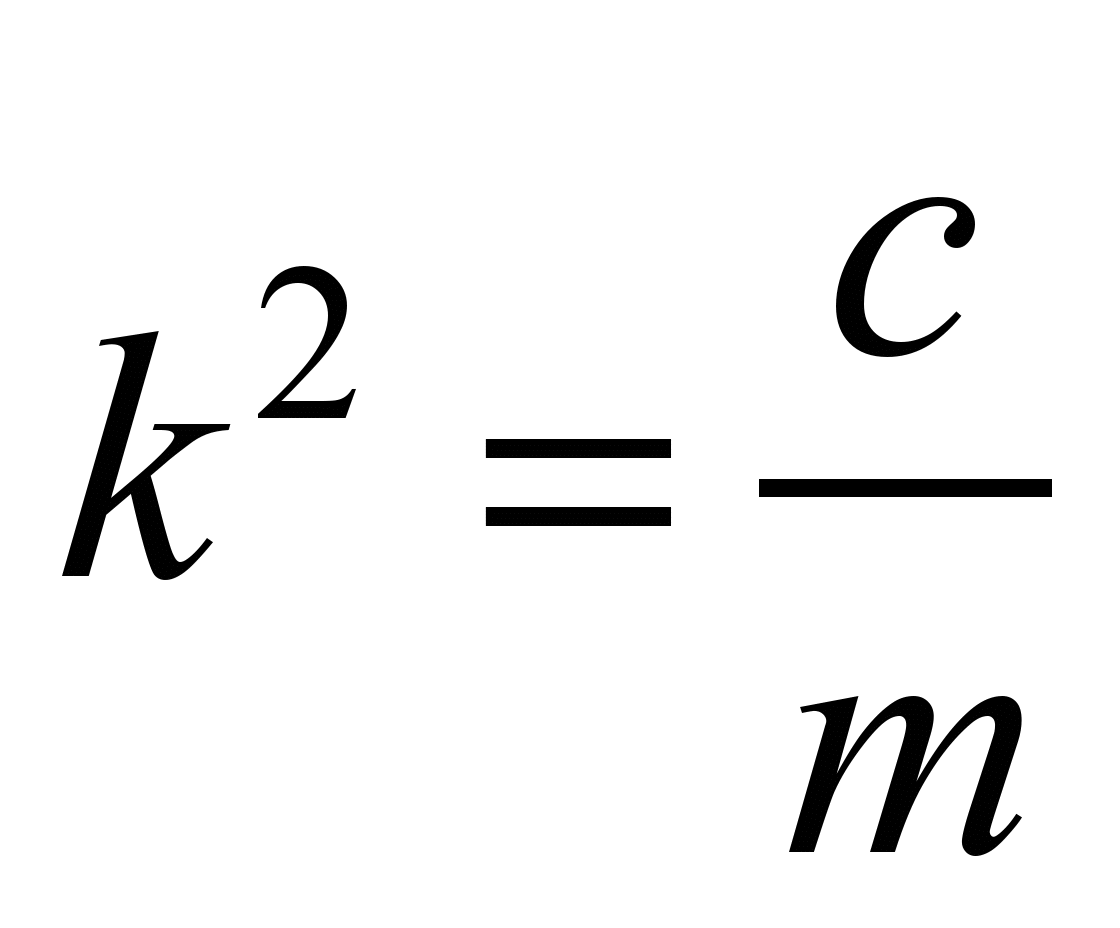 .
.
Its solution
has the form [2, 6,
11, 14]
 ,
,
where
 ,
,
 – constants
derived from the initial conditions. Physical content:
– constants
derived from the initial conditions. Physical content:
 – frequency of
oscillations with regard to friction,
– frequency of
oscillations with regard to friction,
 – frequency of
free oscillations (without friction).
– frequency of
free oscillations (without friction).
Let us
consider the case when the body of mass m
with the help of an elastic
element and a viscous drag damper is attached to a wheel set, the
mass of which is so far neglected, moves along a track, which in the
vertical plane has the irregularity
given by the equation .
Figure 5 shows the calculation model, plane and spatial image of
this scheme.
.
Figure 5 shows the calculation model, plane and spatial image of
this scheme.
Fig. 5. Object of research with regard to track
irregularities
Then the
differential equation of body motion obtained by means of the
Lagrange equation of the second kind has the form [2, 6,
11, 14]:
 ,
,
or:
 .
.
This
equation can be rewritten in a different way:
 ,
,
where
 – amplitude
value of rail deflection,
– amplitude
value of rail deflection,
 – frequency of
sinusoidal perturbation.
– frequency of
sinusoidal perturbation.
In this
case, the solution has the form

where
 – constants of
integration that
satisfy the
initial conditions.
– constants of
integration that
satisfy the
initial conditions.
Findings
Example 1.
Let us consider the real mechanical system of the electric
locomotive DS3 as a single-mass system, which moves along the track,
which in the vertical plane has no geometric defects (without taking
into account the irregularities)
(Fig. 4).
System
parameters:
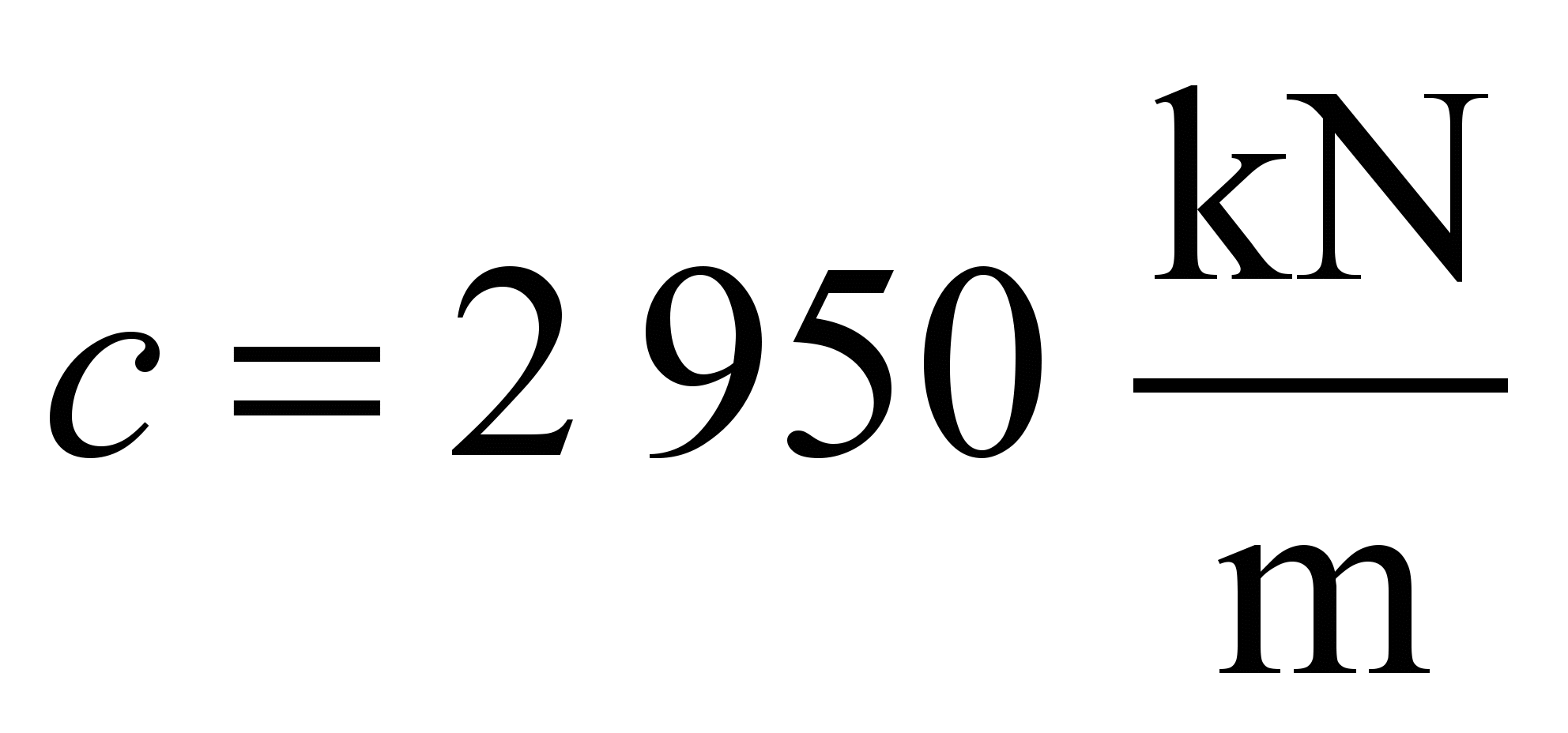 ,
,
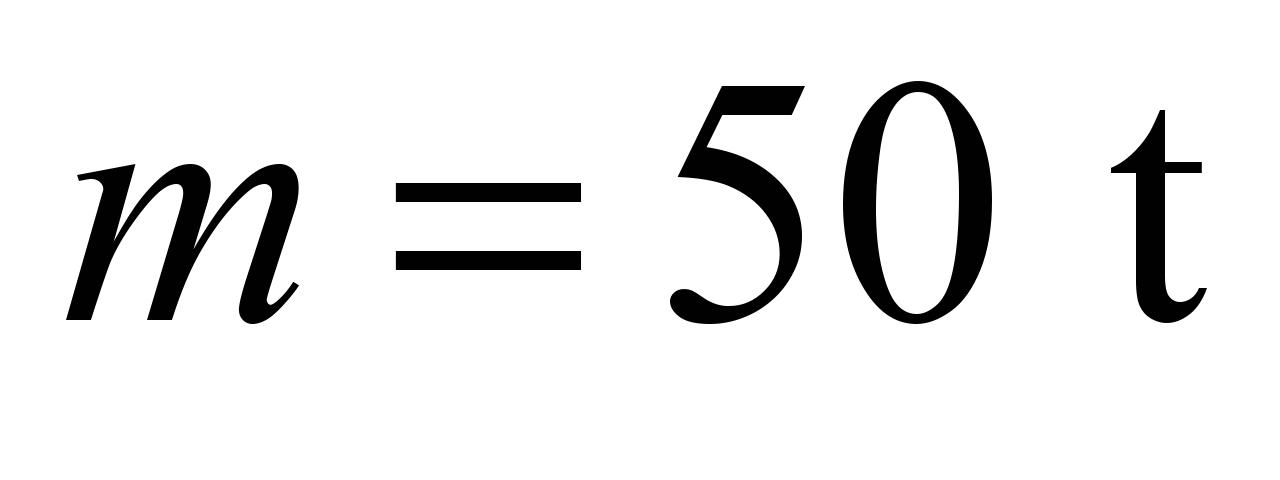 ,
,
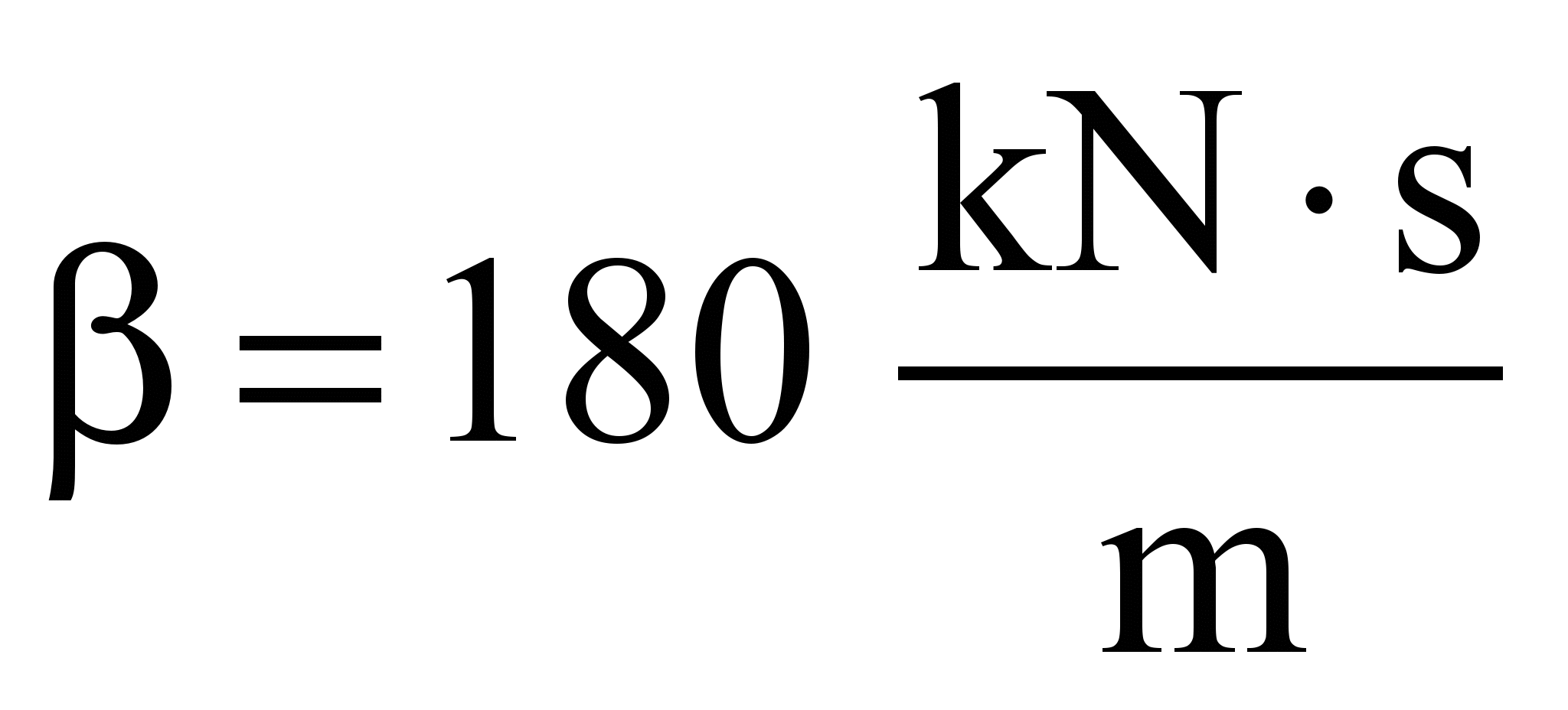 ,
,
 ,
,
 ,
,
 ,
,
 .
.
For
the initial
conditions
 we will
obtain
we will
obtain

 .
Then the final result of the problem has
the following form
.
Then the final result of the problem has
the following form

The
graph of this coordinate behavior, obtained by analytical
calculations and using the software complex, is presented in Figure
6 and Figure 9 respectively.
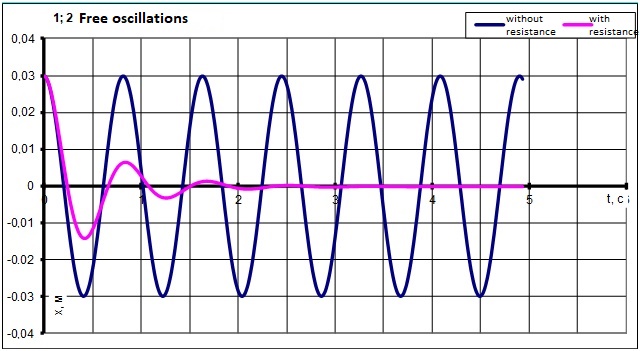
Fig. 6. Graph of free
oscillations
obtained by analytical calculation
Since
designers are
interested in
the forces
that arise
in elastic
elements, we
find
acceleration of
the body



Example 2. The results of the
motion of the same vehicle (under the same conditions and values of
parameters) along the track, having irregularities in the vertical
plane (Fig. 7).
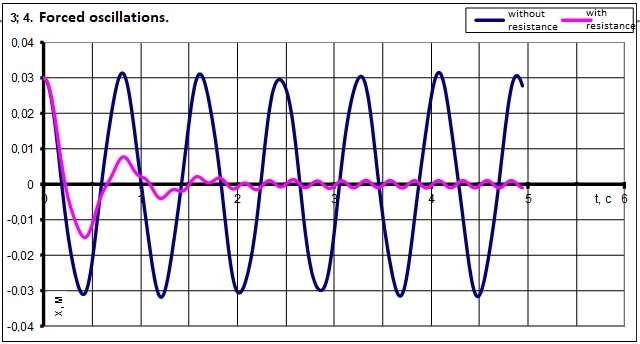
Fig. 7.
Graph of forced
oscillations
obtained by analytical
calculation
Example
3. Amplitude-frequency
response of
the same
vehicle shows the ratio of the amplitude
of body oscillation with the mass
 and the amplitude of track inequalities
depending on the frequency of its inequalities (Fig.
8).
and the amplitude of track inequalities
depending on the frequency of its inequalities (Fig.
8).
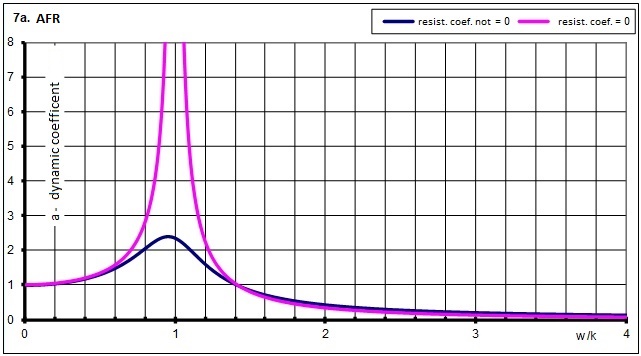
Fig. 8. Graph of amplitude-frequency response
obtained
by analytical calculation
The results obtained using the
modern software system [17, 20] are presented in Fig. 9–11
respectively.
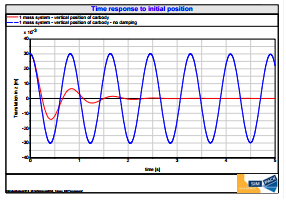
Fig. 9. Graph of free
oscillations obtained
using
software complex
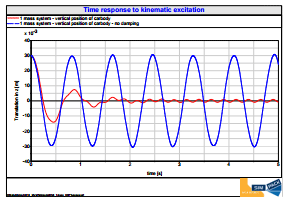
Fig. 10. Graph of
forced oscillations
obtained
using software
complex
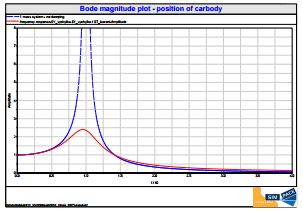
Fig. 11. Graph
of amplitude-frequency
response
obtained
using software
complex
When
comparing these graphs, it is easy to understand that we have the
same results in both cases. Unlike the analytical solving, we can
achieve these results easer with the help of software system.
The software
complex automatically creates an equation of motion, finds a
solution and displays results. This advantage can be used in order
to create complex models with many degrees of freedom (Fig.
12).
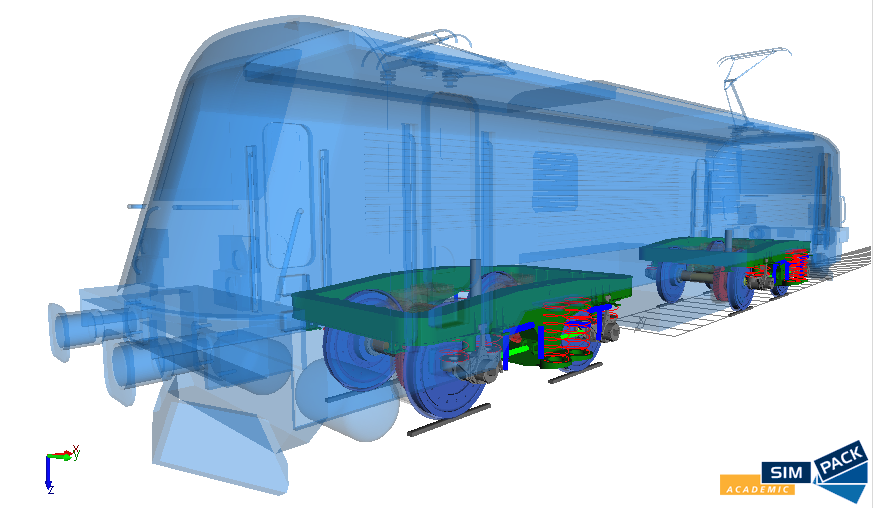
Fig. 12. Spatial nonlinear
electric locomotive
model with 124 degrees of freedom
Without the use of modern
software, the creation of such a model will be very complex and
time-consuming. Modern software complexes allow creating and
calculating such a model within a few days.
Originality and practical
value
Based on the results of many
years of work, the authors present the General Classification of
Locomotive Mechanics, which may be useful to researchers, who are
involved in the assessment of the dynamic qualities of new and
upgraded types of rolling stock.
A new licensed modern software
complex has been utilized. This program complex is applicable in the
design, modeling of units of rolling stock and their elements;
during theoretical and experimental studies, comparison of their
results.
The results
of theoretical research can be taken into account for preliminary
study during creating the reliable constructions of a new vehicle,
further improvement of the vehicle mechanics, and modernization of
the units of rolling stock during field tests.
Conclusions
When creating and improving the
structures of rolling stock, the actual is generalization of
theoretical, scientific-methodical and experimental researches,
which are directed on improvement of qualities of a vehicle in
general, and locomotive mechanics in particular.
The article analyses the
behavior of a vehicle during motion along the track section, which
in the vertical plane does not have geometric defects, and taking
into account the irregularities using the example of the main
locomotive. The research was carried out both analytically and with
the help of modern software complex.
Comparison
of graphs (Fig.
6–8 and Fig.
9–11) shows that the results obtained by different methods
coincide with sufficient accuracy.
The use of modern computing
tools makes it easier and faster to get results compared to using
the analytical methods.
The implementation of the
results of theoretical researches can give an opportunity of
simultaneous increase in vehicle velocity, provision of necessary
dynamic parameters of a railway vehicle, reduce its impact on the
track and improve the level of railway traffic safety.
LIST OF REFERENCE LINKS
Басов, Г. Г. Теоретичні й
експериментальні дослідження екіпажної
частини тепловозів : навч. посіб. /
Г.
Г. Басов, В. І. Нестеренко. – Луганськ
: Ноулідж, 2011. – 247 с.
Блохін, Є. П. Динаміка
електричного рухомого складу : навч.
посіб. / Є. П. Блохін, М. Л. Коротенко,
В.
С. Буров. – Дніпропетровськ : Дніпропетр.
нац. ун-т залізн. трансп. ім. акад. В.
Лазаряна, 2002. – 138 с.
Бондаренко, І. О.
Моделювання з метою встановлення
оціночних умов функціональної безпеки
залізничної колії / I. O. Бондаренко //
Восточно-Европейский журнал передовых
технологий. – 2016. – Т. 1, № 7 (79). –
С. 4–10. doi: 10.15587/1729-4061.2016.59874
Евстратов, А. С. Экипажные части
тепловозов / А. С. Евстратов. – Москва
: Машиностроение, 1987. – 136 с.
Кузишин, А. Я. Побудова
механічної моделі вагона дизель-поїзда
ДПКр-2 та її особливості
/ А. Я. Кузишин, А. В. Батіг // Наука та
прогрес транспорту. – 2017. – № 6 (72). –
С. 20–29.
doi: 10.15802/stp2017/117936
Лазарян, В. А.
Устойчивость
движения рельсовых
экипажей / В. А. Лазарян, Л. А. Длугач, М.
Л. Коротенко. – Киев : Наук. думка, 1972.
– 197 с.
Математична модель
вагона дизель-поїзда ДПКР-2 / С. А.
Костриця, Ю. Г. Соболевська, А. Я. Кузишин,
А. В. Батіг // Наука та прогрес транспорту.
– 2018. – № 1 (73). – С. 56–65.
doi:
10.15802/stp2018/123079
Механическая часть
тягового подвижного состава : учебник
для вузов / под ред. И. В.
Бирюкова. – Москва : Транспорт, 1992. –
440 с.
Мурадян, Л. А. К вопросу
о планах испытаний надежности
механических систем / Л. А. Мурадян,
В.
Ю. Шапошник // Зб. наук. пр. Укр. держ.
ун-ту залізнич. трансп. – Харків, 2015. –
Вип. 157. –
С. 119–128.
Мямлин,
С. В. Особенности
конструкции ходовых частей тягового
подвижного состава / С.
В. Мямлин,
О.
Лунис, Л. А. Недужая //
Наука
та прогрес транспорту.
– 2017. – № 3 (69).
– С. 130–146.
doi: 10.15802/stp2017/104824
Павловський, М. А. Теоретична
механіка / М. А. Павловський. – Київ :
Техніка, 2002. – 510 с.
Повышение надежности экипажной
части тепловозов / под ред. Л. К. Добрынина.
– Москва : Транспорт, 1984. – 248 с.
Соколов, Ю. Н. Конспект
для локомотивных
бригад. Электровоз ДС3. Устройство,
управление, обслуживание / Ю. Н. Соколов.
– Киев : Изд-во
Юго-Запад. ж.-д., 2011.
– 299 с.
Теоретична механіка
: навч. посіб.
/ В. І. Векерик,
Д. І. Ільчишина, К. Г. Левчук, І. В. Цідило,
Л. М. Шальда – Івано-Франківськ :
Факел, 2006. – 459 с.
Тепловозы: Основы теории и
конструкция / под ред. В. Д. Кузьмича. –
Москва : Транспорт, 1991. – 352 с.
Трофимович, В. В.
Механическая часть электроподвижного
состава : курс лекций : в 2 ч. / В. В.
Трофимович. – Хабаровск : Изд-во
Дальневост. гос. ун-та путей
сообщения, 2006. – Ч. 2. – 100 с.
Kalivoda, J. Enhancing
the scientific level of engineering training of railway transport
professionals /
J. Kalivoda, L. О.
Neduzha // Наука
та прогрес транспорту.
– 2017. – № 6 (72).
– С. 128–137.
doi: 10.15802/stp2017/119050
Klimenko, I. Parameter Optimization
of the Locomotive Running Gear / I. Klimenko, J. Kalivoda, L.
Neduzha // Proc.
of 22nd Intern.
Sci. Conf.
(October 3–5, 2018)
/ Kaunas University of Technology. – Trakai
; Klaipėda,
2018. – P. 1095–1098.
Mathematical Simulation of Spatial
Oscillations of the «Underframe-Track» System Interaction
/ I. Klimenko,
L. Černiauskaite, L.
Neduzha, O. Оchkasov
// Intelligent Technologies in Logistics
and Mechatronics Systems – ITELMS’2018
: Proc. of 12th
Intern.
Conf. (April
26–27, 2018, Panevėžys) / Kaunas University of Technology. –
Kaunas, 2018. – P. 105–114.
Multy-Body Simulation Software
[Електроний ресурс] //
SIMULIA
Simpack. –
Available at:
http://www.simpack.com – Title
from the screen. – Accessed
: 31.10.2018.
Myamlin, S. Research
of Innovations of Diesel Locomotives and Bogies / S. Myamlin, L.
Neduzha, Ž. Urbutis // Procedia
Engineering. – 2016. –
Vol. 134. – Р. 469–474. doi: 10.1016/j.proeng.2016.01.069
Nestacionarieji
ir Kvazistatiniai Gelezinkelio Traukiniq Judejimo Rezimai :
monografija /
E.
Blochinas, S. Dailydka, L. Lingaitis, L. Ursuliak ; Vilniaus
Gedimino Technicos Universitetas. – Vilnius
: Technika, 2015. – 167 p. doi:
10.3846/2321-m
Serdiuk, T. M. Modeling of
influence of traction power supply system on railway automatics
devices /
Т. М. Serdiuk // 2017
International Symposium on Electromagnetic Compatibility – EMC
EUROPE (4-7
Sept. 2017). – Angers,
France, 2017. doi: 1109/EMCEurope.2017.8094637
Shykunov, O. А. Three-element
bogie side frame strength / О. А. Shykunov // Наука
та прогрес транспорту.
– 2017. – № 1 (67). – С.
183–193.
doi: 10.15802/stp2017/92535
В. А. ТАТАРІНОВА1*,
Я. КАЛІВОДА2*,
Л. О. НЕДУЖА3*
1*Каф.
«Теоретична та будівельна механіка»,
Дніпропетровський національний
університет
залізничного транспорту
імені академіка В. Лазаряна, вул.
Лазаряна, 2, Дніпро,
Україна, 49010,
тел. +38 (097) 728 36 99,
ел. пошта
Valentina100vol@gmail.com, ORCID 0000-0001-6484-3777
2*Каф.
«Автомобілі, двигуни внутрішнього
згоряння та залізничний транспорт»,
Чеський технічний університет, вул.
Технічна, 4, Прага, 6, Чехія, 16607,
тел.
+(420) 224 352 493, ел. пошта jan.kalivoda@fs.cvut.cz,
ORCID
0000-0002-0278-2515
3*Каф. «Теоретична
та будівельна механіка», Дніпропетровський
національний університет
залізничного
транспорту імені академіка В. Лазаряна,
вул. Лазаряна, 2, Дніпро,
Україна, 49010,
тел. +38 (067) 810 51 65,
ел. пошта nlorhen@i.ua,
ORCID 0000-0002-7038-3006
ДОСЛІДЖЕННЯ ПОВЕДІНКИ МЕХАНІЧНОЇ
ЧАСТИНИ ЛОКОМОТИВА
Мета.
Основною метою роботи є порівняння й
підтвердження результатів теоретичних
досліджень руху локомотива по
прямолінійним та криволінійним ділянкам
колії у встановленому діапазоні
експлуатаційних швидкостей, що є
головним для визначення їх динамічних
якостей. Проведений комплекс досліджень
є однією з передумов поліпшення
динамічних якостей механічної частини
рухомого складу, зокрема параметрів
ходової частини. Методика.
Дослідження проведені методом чисельного
інтегрування динамічної навантаженості
залізничного транспортного засобу з
використанням одного із сучасних
програмних комплексів. У роботі
застосовано математичну модель
просторових коливань локомотива,
отриманих за допомогою рівнянь Лагранжа
другого роду. Результати.
Проведено теоретичні дослідження й
виконано аналіз поведінки транспортного
засобу під час руху по ділянці колії,
яка у вертикальній площині не має
геометричних дефектів, та з урахуванням
нерівностей на прикладі магістрального
локомотива. Дослідження проведено як
аналітично, так і за допомогою сучасного
програмного комплексу. Порівняння
графіків показує, що результати, отримані
різними методами, збігаються з достатньою
точністю. Наукова
новизна. За результатами
багаторічної роботи автори представили
загальну класифікацію механічної
частини локомотивів, що може стати в
нагоді науковцям, які досліджують
динамічні якості нових і модернізованих
засобів рейкового рухомого складу.
Практична значимість.
Застосовано новий ліцензований сучасний
програмний комплекс, який можна
використовувати під час проектування,
моделювання одиниць рухомого складу
та їх елементів під час проведення
теоретичних й експериментальних
досліджень, порівняння їх результатів.
Результати теоретичних досліджень
можуть бути враховані для проведення
попередніх досліджень під час створення
надійних конструкцій нового транспортного
засобу, подальшого поліпшення механічної
частини, модернізації одиниць рухомого
складу, під час проведення
натурних випробувань.
Ключові слова:
транспортний засіб; рухомий склад;
локомотив; механічна частина; візок;
програмний комплекс
В. А. ТАТАРИНОВА1*,
Я. КАЛиВОДА2*,
Л. А. НЕДУЖАЯ3*
1*Каф.
«Теоретическая и строительная механика»,
Днепропетровский национальный
университет
железнодорожного транспорта
имени академика В. Лазаряна, ул. Лазаряна,
2, Днипро,
Украина, 49010,
тел. +38
(097) 728 36 99,
эл. почта
Valentina100vol@gmail.com, ORCID
0000-0001-6484-3777
2*Каф.
«Автомобили, двигатели внутреннего
сгорания и железнодорожный транспорт»,
Чешский технический университет, ул.
Техническая, 4, Прага, 6, Чехия, 16607,
тел.
+(420) 224 352 493, эл. почта
jan.kalivoda@fs.cvut.cz,
ORCID
0000-0002-0278-2515
3*Каф.
«Теоретическая и строительная механика»,
Днепропетровский национальный
университет
железнодорожного транспорта
имени академика В. Лазаряна, ул. Лазаряна,
2, Днипро,
Украина, 49010, тел. +38 (067) 810 51 65,
эл. почта nlorhen@i.ua,
ORCID 0000-0002-7038-3006
ИССЛЕДОВАНИЕ ПОВЕДЕНИЯ МЕХАНИЧЕСКОЙ
ЧАСТИ ЛОКОМОТИВА
Цель.
Основной целью работы является сравнение
и подтверждение результатов теоретических
исследований движения локомотива по
прямолинейным и криволинейным участкам
пути в установленном диапазоне
эксплуатационных скоростей, что является
главным для определения их динамических
качеств. Проведенный комплекс исследований
является одним из условий улучшения
динамических качеств механической
части подвижного состава, в частности
параметров ходовой части. Методика.
Исследования проведены методом
численного интегрирования динамической
нагруженности железнодорожного
транспортного средства с использованием
одного из современных программных
комплексов. В работе применена
математическая модель пространственных
колебаний локомотива, полученных с
помощью уравнений Лагранжа второго
рода. Результаты.
Проведены теоретические исследования
и выполнен анализ поведения транспортного
средства во время движения по участку
пути, который в вертикальной плоскости
не имеет геометрических дефектов, и с
учетом неровностей на примере
магистрального локомотива. Исследование
проведено как аналитически, так и с
помощью современного программного
комплекса. Сравнение графиков показывает,
что результаты, полученные разными
методами, совпадают с достаточной
точностью. Научная
новизна. По результатам
многолетней работы авторы представили
общую классификацию механической части
локомотивов, которая может пригодиться
ученым, исследующим динамические
качества новых и модернизированных
средств рельсового подвижного состава.
Практическая значимость.
Применен новый
лицензированный современный программный
комплекс, который можно использовать
при проектировании, моделировании
единиц подвижного состава и их элементов
при проведении теоретических и
экспериментальных исследований,
сравнения их результатов. Результаты
теоретических исследований могут быть
учтены для проведения предварительных
исследований при создании надежных
конструкций нового транспортного
средства, дальнейшего улучшения
механической части, модернизации единиц
подвижного состава, во время проведения
натурных испытаний.
Ключевые слова: транспортное
средство; подвижной состав; локомотив;
механическая часть; тележка; программный
комплекс
REFERENCES
Basov, Н.
Н., & Nesterenko, V. I. (2011). Teoretychni
y eksperymentalni doslidzhennia ekipazhnoi chastyny teplovoziv:
Navchalnyi
posibnyk.
Lughansk, Noulidzh. (in Ukranian)
Blokhin, Y.
P., Korotenko, M. L., & Burov, V. S. (2002).
Dynamika
elektrychnoho rukhomoho skladu: Navchalnyi
posibnyk.
Dnipropetrovsk:
Dnipropetrovsk National University of Railway Transport named after
Academician V. Lazaryan.
(in
Ukranian)
Bondarenko, I. O. (2016). Modeling
for establishment of evaluation conditions of functional safety of
the railway track. Eastern-European Journal of Enterprise
Technologies, 1/7(79),
4-10.
doi: 10.15587/1729-4061.2016.59874
(in Ukranian)
Yevstratov, A. S. (1987).
Ekipazhnye chasti teplovozov. Moscow:
Mashinostroenie.
(in Russian)
Kuzyshyn, A. Y., & Batig, А.
V. (2017). Construction of Mechanical Model of the Diesel-Train
DTKr-2 Car and its Features. Science
and Transport Progress, 6(72), 20-29.
doi: 10.15802/stp2017/117936 (in Ukranian)
Lazarian, V. A., Dluhach, L. A., &
Korotenko, M. L. (1972). Ustoychivost
dvizheniya relsovykh ekipazhey. Kуіv:
Naukova dumka. (in
Russian)
Kostritsa, S. A., Sobolevska, Y.
H., Kuzyshyn, A. Y., & Batih, А. V. (2018). Mathematical Model
of
Dpkr-2
dyzel Train Car. Science and Transport
Progress,
1(73), 56-65.
doi: 10.15802/stp2018/123079 (in Ukranian)
Biryukov, I. V.
(Ed).
(1992). Mekhanicheskaya chast
tyagovogo podvizhnogo sostava: Uchebnik dlya vuzov.
Moscow:
Transport. (in Russian)
Muradyan, L. A., Shaposhnik, V. Y.
(2015). K voprosu o planakh ispytaniy nadezhnosti mekhanicheskikh
sistem. Zbirnyk naukovykh prats
Ukrainskoho derzhavnoho universytetu zaliznychnoho transportu, 157,
119-128. (in Russian)
Myamlin, S. V., Lunys, O., &
Neduzha, L. O. (2017). Peculiarities of Running Gear Construction
of Rolling Stock. Science and
Transport Progress, 3(69), 130-146.
doi: 10.15802/stp2017/104824 (in Russian)
Pavlovskyi, M. A. (2002).
Teoretychna mekhanika.
Kyiv: Tekhnika. (in Ukranian)
Dobrynin, L. K. (Ed).
(1984). Povyshenie nadezhnosti
ekipazhnoy chasti teplovozov. Moscow:
Transport. (in Russian)
Sokolov, Y. N. (2011). Konspekt
dlya lokomotivnykh brigad. Elektrovoz DS3. Ustroystvo, upravlenie,
obsluzhivanie. Kуіv: Іzdatelstvo
Yugo-Zapadnoy zheleznoy dorogi.
(in Russian)
Vekeryk, V. I., Ilchyshyna, D. I.,
Levchuk, K.
H., Tsidylo, I. V., & Shalda, L. M. (2006). Teoretychna
mekhanika.
Ivano-Frankivsk: Fakel.
(in Ukranian)
Kuzmich, V. D. (Ed).
(1991). Teplovozy: Osnovy teorii i
konstruktsiya. Moscow: Transport. (in
Russian)
Trofimovich, V. V. (2006).
Mekhanicheskaya chast
elektropodvizhnogo sostava: Kurs lektsiy
(Vol. 1-2).
Khabarovsk: Izdatelstvo Dalnevostochnogo gosudarstvennogo
universiteta putey soobshcheniya. (in Russian)
Kalivoda, J., & Neduzha, L. O.
(2017). Enhancing the Scientific Level of Engineering Training of
Railway Transport Professionals. Science
and Transport Progress, 6(72),
128-137. doi: 10.15802/stp2017/119050 (in
English)
Klimenko, І, Kalivoda, J., &
Neduzha, L. (2018). Parameter
Optimization of the Locomotive Running Gear: Proceedings
of 22nd International Scientific Conference (October
3–5, 2018).
Trakai, Klaipėda.
(in English)
Klimenko,
І., Černiauskaite,
L., Neduzha,
L. &
Оchkasov,
О. (2018). Mathematical Simulation of
Spatial Oscillations of the «Underframe-Track» System
Interaction.
Intelligent Technologies in
Logistics and Mechatronics Systems –
ITELMS’2018:
Proc. of 12th
Intern.
Conf. (April
26–27, 2018, Panevėžys). Kaunas.
(in English)
Multy-Body Simulation Software.
SIMULIA Simpack.
Retrived from http://www.simpack.com
(in English)
Myamlin, S., Neduzha, L., &
Urbutis, Ž. (2016). Research of Innovations of Diesel Locomotives
and Bogies. Procedia Engineering, 134,
469-474. doi: 10.1016/j.proeng.2016.01.069 (in
English)
Blochinas, E., Dailydka, S.,
Lingaitis, L. P., & Ursuliak, L. (2015). Nestacionarieji ir
kvazistatiniai ge-ležinkelio
traukinių judėjimo režimai: monografija. Vilnius:
Technika. doi: 10.3846/2321-m (in
Lithuanian)
Serdiuk, T. M. (2017). Modeling of
influence of traction power supply system on railway automatics
devices. 2017 International Symposium
on Electromagnetic Compatibility – EMC EUROPE.
doi: 10.1109/emceurope.2017.8094637
(in English)
Shykunov, O. A. (2017).
Three-element Bogie Side Frame Strength. Science
and Transport Progress, 1(67),
183-193. doi: 10.15802/stp2017/92535 (in
English)
Received:
June 04, 2018
Accepted:
Oct. 08, 2018
d oi
10.15802/stp2018/ ©
V.
А. Татаrіnоvа,
J.
Kаlіvоdа,
L.
О. Nеduzha,
2018
oi
10.15802/stp2018/ ©
V.
А. Татаrіnоvа,
J.
Kаlіvоdа,
L.
О. Nеduzha,
2018